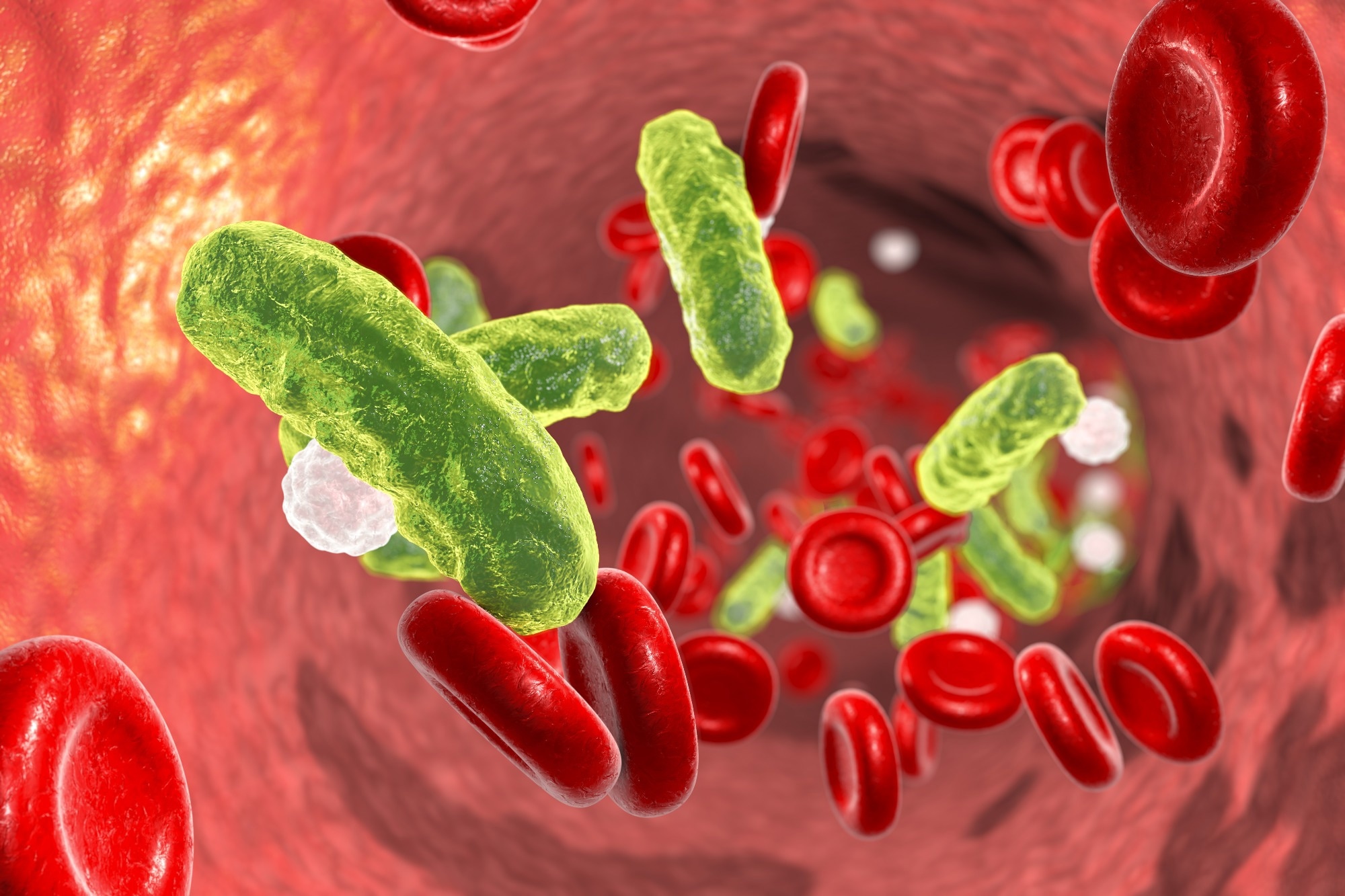In a recent study published in eClinicalMedicine, researchers explored the impact of socioeconomic status and clinical variables on sepsis incidence and mortality during the severe acute respiratory syndrome coronavirus 2 (SARS-CoV-2) pandemic in England.
 Study: Clinical and health inequality risk factors for non-COVID-related sepsis during the global COVID-19 pandemic: a national case-control and cohort study. Image Credit: Kateryna Kon/Shutterstock.com
Study: Clinical and health inequality risk factors for non-COVID-related sepsis during the global COVID-19 pandemic: a national case-control and cohort study. Image Credit: Kateryna Kon/Shutterstock.com
Background
The coronavirus disease 2019 (COVID-19) has significantly impacted global health, including the increasing prevalence of non-communicable diseases such as sepsis.
The pandemic has led to social restrictions, national lockdowns, and healthcare delivery changes, indirectly affecting the global prevalence of sepsis.
Understanding socioeconomic and clinical risk determinants is crucial to improving sepsis prevention and management. Studies indicate that sepsis is associated with socioeconomic discrepancies and pre-hospitalization clinical histories. Nevertheless, research exploring the interplay between these factors and sepsis unrelated to COVID-19 is limited.
About the study
In the present national-level, case-control, and cohort study, researchers evaluated the impact of socioeconomic discrepancies and clinical variables on sepsis incidence and 30-day death risk during COVID-19.
Primary care data were retrieved from the OpenSAFELY analytics platform for analysis. The records were linked to the United Kingdom (UK) Office for National Statistics (ONS), Second-Generation Surveillance System (SGSS), and Secondary Uses Services (SUS) data.
Sepsis was diagnosed from hospitalization records using the International Classification of Diseases, tenth revision (ICD-10) diagnostic codes with 248,767 cases (11%) of sepsis unrelated to COVID-19 among 22 million individuals between January 1 2019, and June 30 2022.
The case-cohort included individuals diagnosed with sepsis without a SARS-CoV-2 infection record in health databases six weeks before sepsis diagnosis. The control group included individuals who did not receive a sepsis diagnosis, matched by gender, calendar month, and age in a 1:6 ratio.
The Index of Multiple Deprivation (IMD) assessed socioeconomic deprivation based on variables such as education, employment, income, and living environment. Sepsis was classified into cases acquired from the community or hospitals based on a diagnosis received within 2.0 days of hospitalization or later, respectively.
The team defined three time periods: (i) pre-COVID-19: between January 1, 2019, and March 25, 2020; (ii) COVID-19-related lockdown: between March 26, 2020, and March 8, 2021; and (iii) post-national lockdown: March 9, 2021, and June 30, 2022.
Logistic regression modeling was performed to determine the odds ratio (OR) values for the relationships between potential indicators and sepsis unrelated to COVID-19 and associated death within 30 days.
The team excluded individuals not registered at a primary care practice for ≥1.0 years before the sepsis diagnosis date and cases without IMD and regional records.
Results
In total, 224,361 cases with 1,346,166 controls were analyzed. Among the cases, 80% were community-acquired, and 20% were hospital-acquired. A higher percentage of them were white, overweight or obese, belonged to the most socioeconomically deprived quintile, smoked, and consumed alcohol in hazardous quantities.
The incidence of sepsis unrelated to COVID-19 was higher among babies and low among those aged 3.0 to 17 years, steeply increasing with advancing age.
In addition, a higher incidence was observed among males in the pre-COVID-19 and post-lockdown periods, with values reducing to similar levels during the lockdown. The monthly incidence of sepsis unrelated to COVID-19 decreased from 0.3 per 1,000 individuals in February 2020 to 0.1 in April 2020, compared to 0.4 to 0.35 per 1,000 individuals in 2019.
The rate fluctuated till April 2021 and remained stable until the end of the study period. The most socioeconomically deprived statistical quintile was related to increased odds of non-SARS-CoV-2-related sepsis development compared to the least socioeconomically deprived statistical quintile (crude odds ratio, 1.8).
Other risk determinants (post-comorbidity adjustment) included chronic hepatic disease (adjusted odds ratio, 3.1), learning disability (adjusted odds ratio, 3.5), chronic renal disease (the adjusted ORs in the fourth and fifth stages were 2.6 and 6.2, respectively), neurological disease, cancer, and immunocompromised conditions.
Individuals prescribed antimicrobials during the previous year had an adjusted OR of 3.4 (crude OR, 5.1) for community-acquired sepsis unrelated to COVID-19. The incidence of sepsis unrelated to COVID-19 decreased during COVID-19 and bounced back to pre-COVID-19 levels post-lockdown upliftment.
Death risk within 30 days in the case cohort was higher among the most socioeconomically deprived white individuals aged ≥80 years.
The adjusted OR of mortality for individuals with the highest socioeconomic deprivation was 1.3 before COVID-19, 1.2 during the national lockdown, and 1.1 post-national lockdown. Sensitivity analyses analyzing adults separately, applying multiple imputations, and completing case assessments yielded similar findings.
Conclusion
Overall, the study findings showed that socioeconomic deprivation and comorbidities such as chronic kidney and liver disease increase the risk of incidence of and mortality from sepsis unrelated to COVID-19.
Sepsis incidence decreased during lockdown but returned to pre-COVID-19 levels after April 2021; however, COVID-19 did not significantly moderate the relationship between risk factors and sepsis development. Increasing antibiotic targeting accuracy could improve sepsis prevention without increasing antibiotic resistance risk.